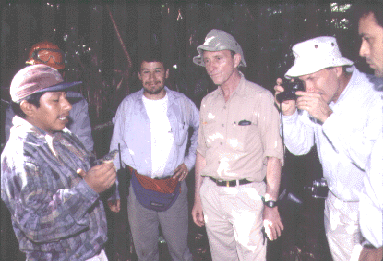The Smithsonian in Latin America Today
 Smithsonian scientific interchange with Latin America continues in the depth and breadth demonstrated by the historical record. The tradition of collegial relationships across the Americas derives new meaning from concerns over the responsible stewardship of the earth's natural resources. In Belize, the National Museum of Natural History leased a small island in 1972 to conduct studies on coral reef and mangrove forest under the Caribbean Coral Reef Ecosystems (CCRE) program. A Mangrove Ecology Course for high school biology teachers eventually reached every teacher in the country and many government officials, leading to the creation of a Marine Research Centre by the University College of Belize.
Smithsonian scientific interchange with Latin America continues in the depth and breadth demonstrated by the historical record. The tradition of collegial relationships across the Americas derives new meaning from concerns over the responsible stewardship of the earth's natural resources. In Belize, the National Museum of Natural History leased a small island in 1972 to conduct studies on coral reef and mangrove forest under the Caribbean Coral Reef Ecosystems (CCRE) program. A Mangrove Ecology Course for high school biology teachers eventually reached every teacher in the country and many government officials, leading to the creation of a Marine Research Centre by the University College of Belize.
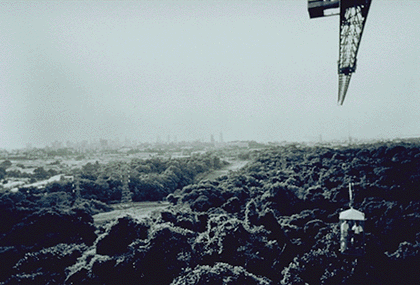
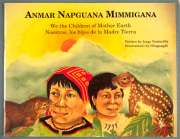 As custodian of Barro Colorado Island, the Smithsonian Tropical Research Institute's relationship to the Republic of Panama is unique. STRI officials serve on the boards of conservation organizations such as the Patronato of the Metropolitan Natural Park, Fundacion Natura and ANCON. Since 1946 STRI has developed marine science laboratories on both the Atlantic and Pacific coasts of Panama. STRI offers an introductory course on methods in field biology for University of Panama students, with field work at the Gigante and Gamboa facilities. At Culebra Point, a marine education center provides hands-on learning experience for Panamanian students and teachers. For many years in the San Blas islands, STRI scientists taught members of the Kuna tribe about their natural environment in exchange for access to research sites. A coloring book in Kuna and Spanish teaches children to name and identify local plants and animals.
As custodian of Barro Colorado Island, the Smithsonian Tropical Research Institute's relationship to the Republic of Panama is unique. STRI officials serve on the boards of conservation organizations such as the Patronato of the Metropolitan Natural Park, Fundacion Natura and ANCON. Since 1946 STRI has developed marine science laboratories on both the Atlantic and Pacific coasts of Panama. STRI offers an introductory course on methods in field biology for University of Panama students, with field work at the Gigante and Gamboa facilities. At Culebra Point, a marine education center provides hands-on learning experience for Panamanian students and teachers. For many years in the San Blas islands, STRI scientists taught members of the Kuna tribe about their natural environment in exchange for access to research sites. A coloring book in Kuna and Spanish teaches children to name and identify local plants and animals.
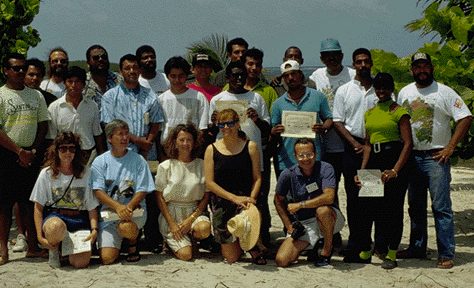

 In Manaus, Brazil, a study of the interface between continuous Amazonian rain forests and human encroachment began in 1980. The Biological Dynamics of Forest Fragments project, now part of the National Institute for Amazonian Research, supports 35 Brazilian graduate students in an internationally recognized tropical ecology course. In the Atlantic coastal rain forest of Brazil, the National Zoological Park has worked since the 1960s to preserve the critically endangered golden lion tamarin (Leontopithecus rosalia). After initial studies at the NZP's facility in Rock Creek Park, the program began in 1983 to reintroduce captive-born animals into the wild, and recently progressed to a habitat restoration program and translocation of threatened golden lion tamarins. Future plans are to turn over the administration to Brazilian scientists.
In Manaus, Brazil, a study of the interface between continuous Amazonian rain forests and human encroachment began in 1980. The Biological Dynamics of Forest Fragments project, now part of the National Institute for Amazonian Research, supports 35 Brazilian graduate students in an internationally recognized tropical ecology course. In the Atlantic coastal rain forest of Brazil, the National Zoological Park has worked since the 1960s to preserve the critically endangered golden lion tamarin (Leontopithecus rosalia). After initial studies at the NZP's facility in Rock Creek Park, the program began in 1983 to reintroduce captive-born animals into the wild, and recently progressed to a habitat restoration program and translocation of threatened golden lion tamarins. Future plans are to turn over the administration to Brazilian scientists.
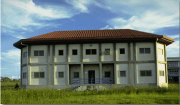
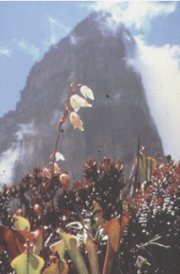 To document and preserve the biological diversity of the Guianas, Museum of Natural History scientists developed a multidisciplinary program, beginning in 1987 with botanical surveys of Guyana, Suriname, and French Guiana. Through a Debt-for-Nature swap with the World Wildlife Fund-Canada, the Biological Diversity of the Guianas Project built a center on the University of Georgetown campus to house collections, a library and an exhibit space. In 1993 the Smithsonian hosted a round table to begin research expeditions to Cuba in botany, entomology, marine botany, marine invertebrates, and vertebrate zoology as well as art, archaeology, and history. Cuban scientists have been invited to the Smithsonian for consultation and research since the early 1970s.
To document and preserve the biological diversity of the Guianas, Museum of Natural History scientists developed a multidisciplinary program, beginning in 1987 with botanical surveys of Guyana, Suriname, and French Guiana. Through a Debt-for-Nature swap with the World Wildlife Fund-Canada, the Biological Diversity of the Guianas Project built a center on the University of Georgetown campus to house collections, a library and an exhibit space. In 1993 the Smithsonian hosted a round table to begin research expeditions to Cuba in botany, entomology, marine botany, marine invertebrates, and vertebrate zoology as well as art, archaeology, and history. Cuban scientists have been invited to the Smithsonian for consultation and research since the early 1970s.
 Long-term collaboration with archaeologists in Brazil, beginning in 1965, has been dedicated to reconstructing prehistoric adaptation to changing environments along the coast and in the Amazon Basin. The Programa Nacional de Pesquisas Arqueologicas na Bacia Amazonica (PRONAPABA) now includes archaeologists in Argentina, Chile, Peru, Ecuador, Bolivia and Cuba.
Long-term collaboration with archaeologists in Brazil, beginning in 1965, has been dedicated to reconstructing prehistoric adaptation to changing environments along the coast and in the Amazon Basin. The Programa Nacional de Pesquisas Arqueologicas na Bacia Amazonica (PRONAPABA) now includes archaeologists in Argentina, Chile, Peru, Ecuador, Bolivia and Cuba.
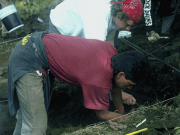 Archaeological and ethnohistorical research is being conducted in the Valley of Toluca in central Mexico to study the human impact on the environment. In collaboration with the Institute of Anthropological Research at the National Autonomous University of Mexico, this project is developing an international strategy for studying the human dimensions of global change. Smithsonian archaeologists investigate the origins of agriculture in the Americas, particularly the domestication of squash. Linguistic, ethnohistoric and ethnographic research is also carried on from Chihuahua among the Tarahumara to the southern reaches of Chiapas.
Archaeological and ethnohistorical research is being conducted in the Valley of Toluca in central Mexico to study the human impact on the environment. In collaboration with the Institute of Anthropological Research at the National Autonomous University of Mexico, this project is developing an international strategy for studying the human dimensions of global change. Smithsonian archaeologists investigate the origins of agriculture in the Americas, particularly the domestication of squash. Linguistic, ethnohistoric and ethnographic research is also carried on from Chihuahua among the Tarahumara to the southern reaches of Chiapas.
A literacy project created by a Smithsonian anthropologist teaches Maya speakers of San Lorenzo Zinacantan and surrounding villages to read and write their own language. The House of the Maya has awarded diplomas to over 1,500 Tzotzil men, women and children; the course is now taught by Tzotzil and Tzeltal Maya teachers. A Mayan writers group has created a series of bilingual booklets on oral history, folk tales and customs, and original scripts for a puppet and an actors theater.
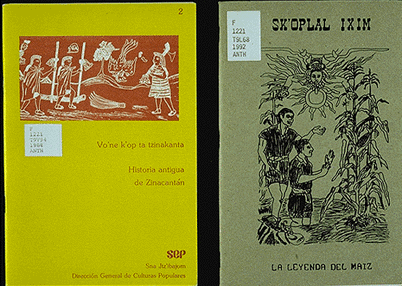
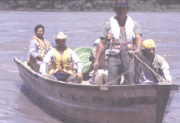
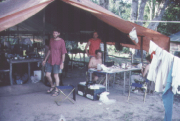 The program reaching the widest audience in the Americas today is the Smithsonian Institution Libraries exchange program. It represents a hundred and fifty years of scholarly communication worldwide, exchanging scientific literature with over five hundred Latin American libraries and other organizations.
The program reaching the widest audience in the Americas today is the Smithsonian Institution Libraries exchange program. It represents a hundred and fifty years of scholarly communication worldwide, exchanging scientific literature with over five hundred Latin American libraries and other organizations.
This 1996 exhibition, celebrating the Institution's sesquicentennial, offers a glimpse of our past and present work in Latin America. The tradition that began with expeditions continues in Smithsonian programs of scientific collaboration throughout the western hemisphere.
